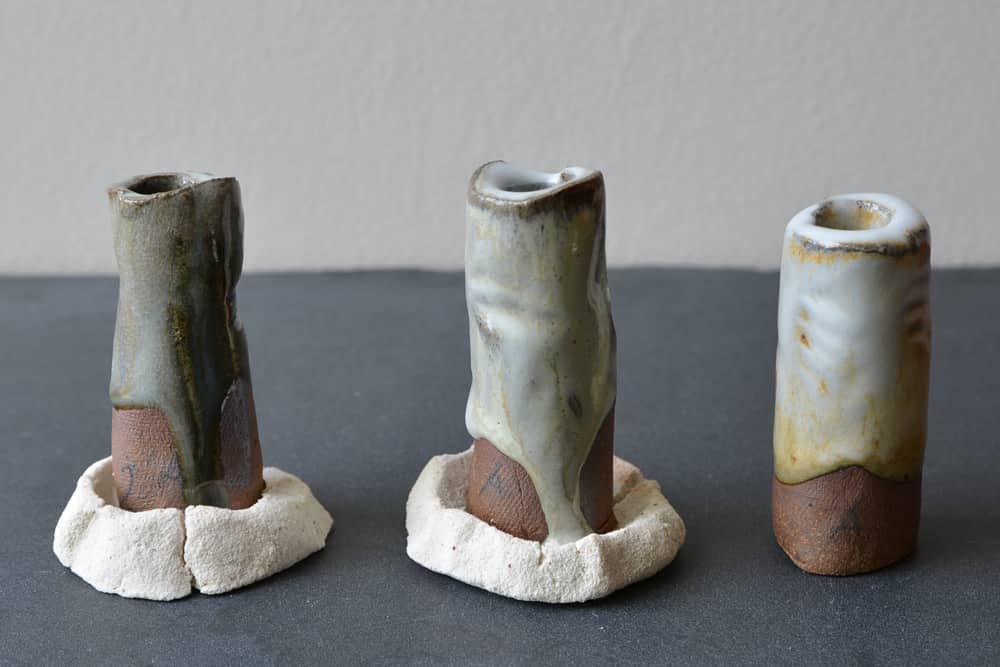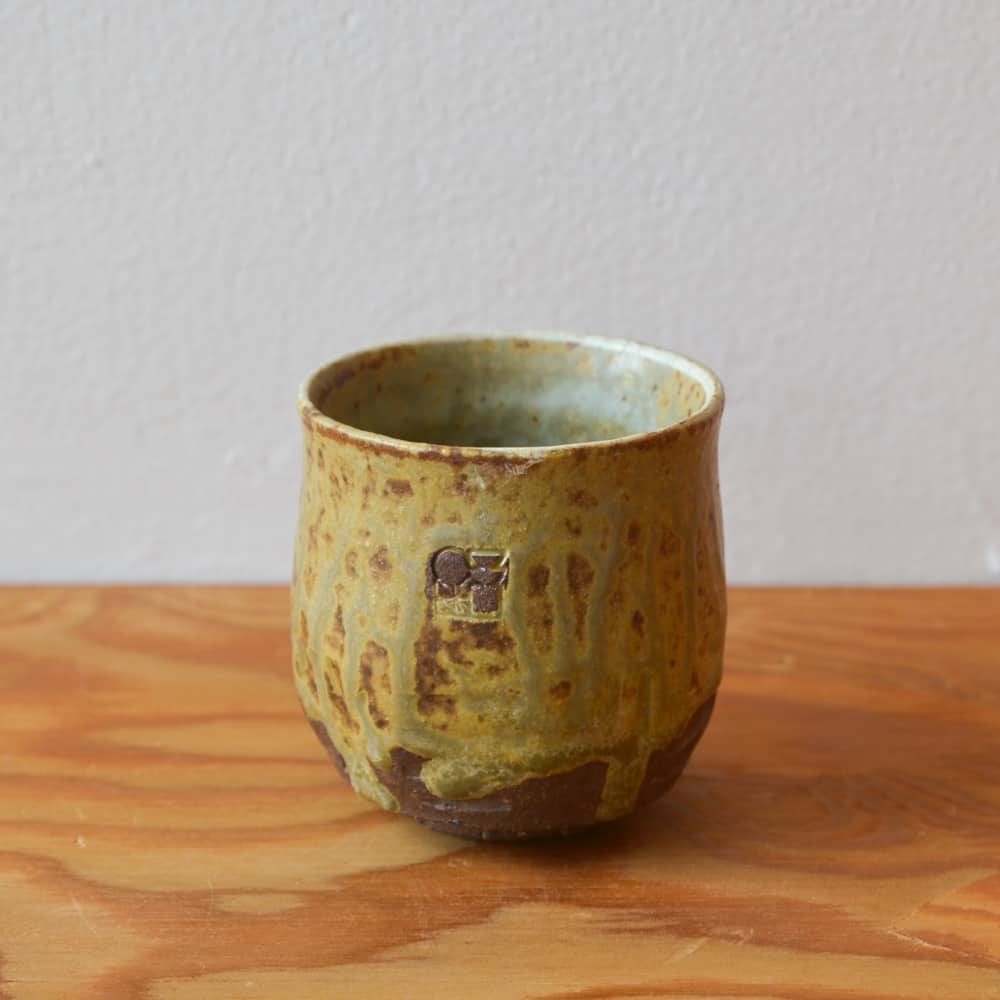This is a behind-the-scenes look at the wood-ash glazes I use here in the studio – about how the beautiful surfaces of these ceramic vessels come to be, and about how that process is connected to our community and the natural world around us. Central to this story are the trees that give us the wood which is at the heart of the process. It is a happy coincidence that just as I was starting to write this post, the president came to visit my beloved Seward Park and signed an executive order designed to protect old growth forests. Seward Park, near my home and studio, has been integral to my life here in Seattle. It has an old growth forest, miles of trails, and a thriving ceramic arts center where I was a resident and teacher for years.
I began my relationship with wood-ash glazes by asking Jeremy, the owner of MioPosto, a wood-fired pizza restaurant in the Mt Baker neighborhood, if I could collect ash from the pizza oven. These many years later I am still working with their ash, along with ash from many other sources, which friends help me find and collect.
The process of preparing a wood-ash glaze is long and laborious. I start with a metal bucket full of coals and ash, then sieve the ash from the coal until I am left with a fine powder. That powder is then mixed with other minerals to get the glaze just right. Getting the mixture right is a painstaking process of adjusting one chemical at a time, firing after firing. It is exciting to see the effect of each small change as I work to get a stable glaze, with a strong bond to the clay, and to find the desired texture, sheen, and color.
People have been using wood-ash glazes since around 1500 BC. It is thought that ash glazing was discovered in China when ashes from the wood used to heat the kiln accidentally fell onto the pottery and created a glaze. Wood-ash can function on its own as a glaze in high fire ceramics (fired at 1300°C or 2370°F). It has all the minerals needed to melt and bond safely with clay. Ash glaze can’t be used in commercial ceramics that use low and mid temperature firing.
The glaze is composed of three essential elements:
- Silica – has a high melting point of 1700°C
- Feldspar – added to lower the melting temperature to a manageable level
- Colorants – from various sources such as iron, cobalt, and copper
Glazes have both practical and aesthetic purposes – practically, they seal vessels so that they can hold liquid, and make the surfaces harder; aesthetically, they provide the opportunity to create an infinite variety of colors and textures. One of the most interesting aspects of working with wood ash glazes is their unpredictability – no matter how familiar one is with a particular tree species’ mineral composition, each tree will yield a different mixture and thus a different appearance as a glaze.
It is impossible to understand and appreciate wood-ash glazing without thinking deeply about trees – they are at the heart of the matter. Each tree grows in its own unique environment, with its own microclimate. Each tree extends its leaves and its roots in its own way, depending on what it finds in terms of light, water, nourishment, soil consistency and an infinity of other factors. Different species of tree will do this differently, and each individual tree has its own way, just as a person does.
Pines, for instance, draw in and retain more silica, which helps protect their needles from being eaten. Most plants have the silica and calcium necessary to create a glaze, but trees, in their large-scale growing project, draw in many more minerals such as sodium, potassium, magnesium, and iron ore, from the soil and rocks that make up the earth’s crust. Each tree is a storehouse, with a unique collection of minerals. When the organic materials are burned away from the wood, what is left is a mixture of those minerals in powder form. Every tree has the potential to produce a unique glaze.
Here in the studio, there is a collection of buckets, and in them is the ash from many kinds of tree – apple, maple, fir, pine, tamarack, and others – and each kind offers up a different palette of color, sheen, and texture. So, as you sit at your table and contemplate the natural beauty of the surface of your cup, you can think about the tree that, as it grew, drew its own special collection of minerals from the earth and shared it with you.








